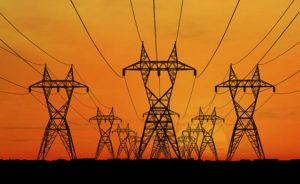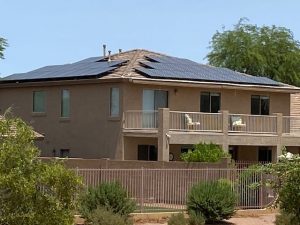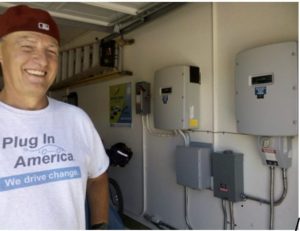Comparing a CCA Household to an APS Household

by Russell Lowes, AZ4CC Advisory Board Member
The Arizona Corporation Commission is contemplating de-monopolizing the electric energy market, with Community Choice Aggregation (CCA) under consideration, as stated in the Retail Competition Docket. I have calculated the savings in monthly bills and carbon emissions for a typical CCA household, which would rely heavily on a combination of energy efficiency, solar, battery storage and wind. And the savings are significant. Read on…
Lower income families, in particular, are disproportionately affected compared to higher economic classes and non-minority populations. Hence, to opt for a lower cost CCA scenario will help settle disproportionate pressures on minorities and others within the lower economic classes in the Arizona Public Service (APS) service area. Conversely, to opt for the higher-cost scenario of expanding the old APS mix would create an economic oppression of such lower economic classes, including many minorities.
The current APS breakdown of energy options, as of 2019, includes power production mostly through nuclear and fossil fuels, with some solar. The new CCA scenario would bring a reduction in the cost of expansion, compared to the old mix, by about 32%. The new scenario with CCA would also bring about an extreme reduction in CO2 emissions by nearly 96%.
In the accompanying spreadsheet, you will see the detailed assumptions of this where I compare the current blend of energy options for APS, projected forward with new expansion, with a hypothetical CCA scenario.
(My background is in power plant economics and I testified before this Arizona Corporation Commission in 1986 on the economics of the Palo Verde Nuclear Generating Station (PVNGS) and the alternative coal plant option. Our book, Energy Options for the Southwest of which I was the primary author with three other authors, projected PVNGS construction costs at $6.1 billion, while APS projected $2.8 billion. The plant was completed at over 100% greater cost than APS had projected and within 4% of our projection, at $5.9 billion. Needless to say we had one, of if not the most, accurate nuclear plant cost projections in the nation.)
The spreadsheet shows the current APS energy mix, assuming the same projected future mix and associated spot costs of each technology for electrical expansion (that is, the cost of expanding with new power capacity for nuclear, coal, gas, solar, etc.), which is in Table 1, in light blue, to the left. Table 2, in light purple, to the right, lists the mix and the costs, and the CO2 output of a CCA option.
Both the current mix in Table 1 and the CCA mix in Table 2 are based on future costs of electrical capacity additions, given current spot cost estimates for newly procured energy.
Table 3, at the bottom, cream-colored, is a recalculation of energy imported by APS to spread this imported energy into the mix of the different types of electricity APS currently uses. This recalculation is reflected in the first, light blue block (2nd column); this recalculation table shows how the percentages in APS household estimates in the 2nd column of Table 1 were derived.
The green “Summary” section below the top two tables shows the dollars saved per household per month and the savings in CO2 Emissions in grams per month for the CCA household per month.
The bottom line is this: to steer away from the current mix of energy for new capacity, and to embrace a typical CCA strategy will yield a monthly savings for a family in APS territory of about $41 per month, about a 32% cost reduction compared to expanding with the current blend that APS lists in its latest annual report.
As large as this cost saving is, the savings in CO2 produced from the switch is stunningly high. A typical household using 750 kilowatt-hours per month will reduce their CO2 output from an existing 838 pounds a month to only 32 pounds. This is a reduction of 806 pounds of CO2 per month, or 96.2%!
Clearly the move away from the outdated paradigm of energy toward the new Community Choice Energy approach will be better for families, our overall economy, and our environment.



